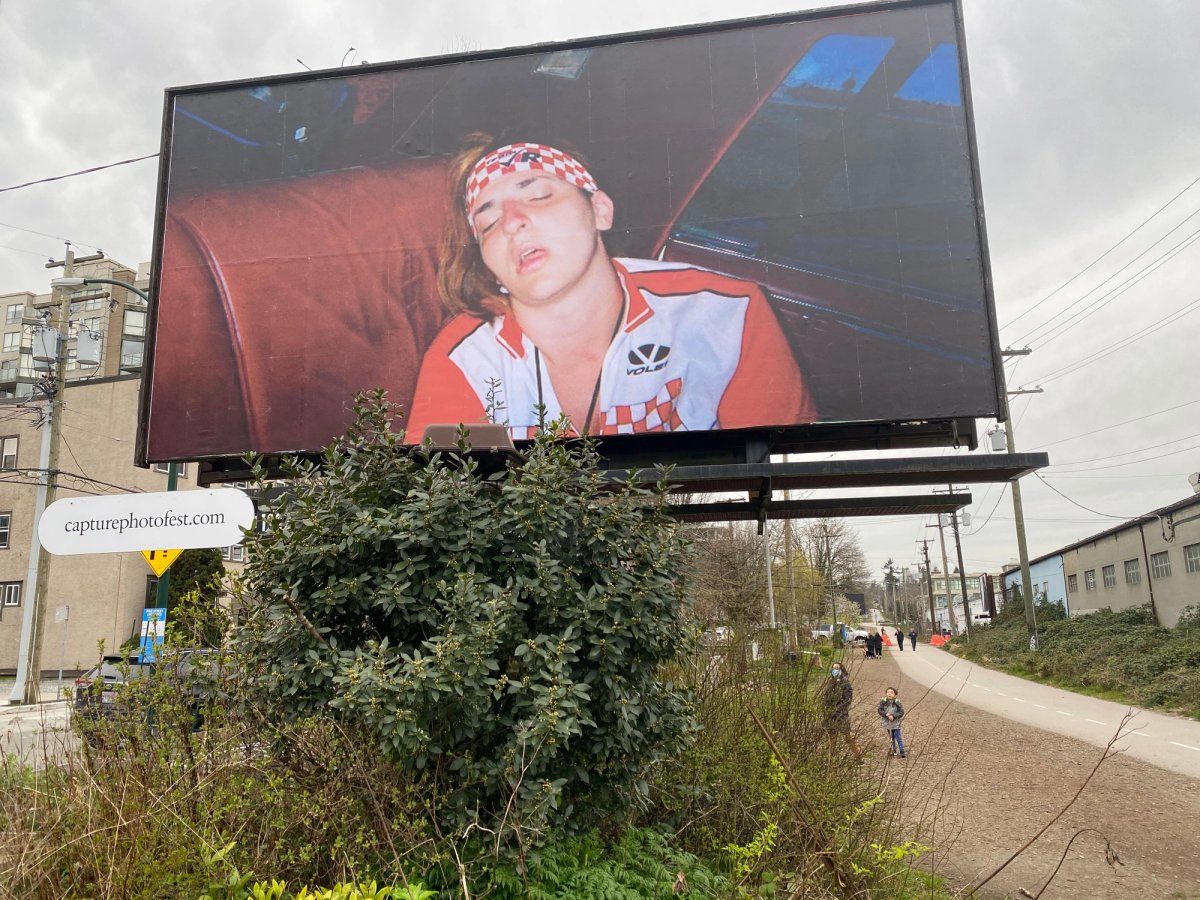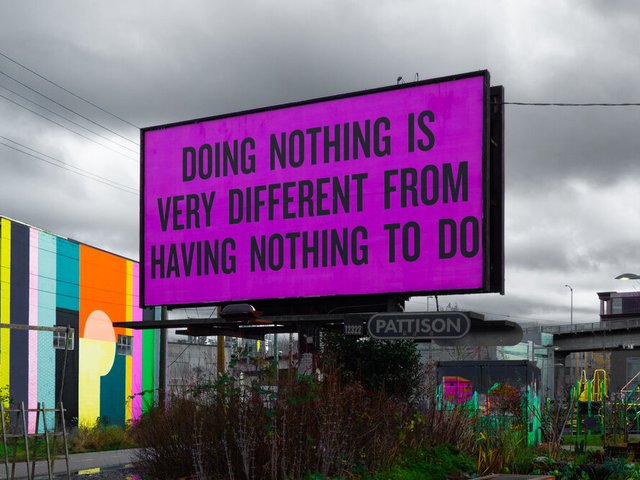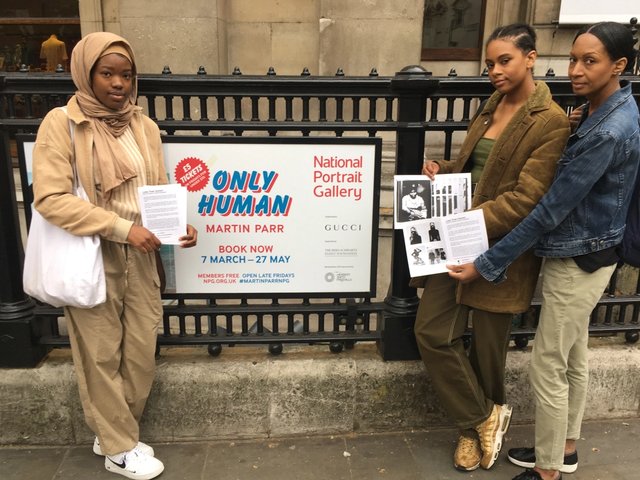While public art can sometimes be ephemeral, seven new site specific billboard works by Steven Shearer commissioned by Vancouver’s Capture Photography Festival, survived only three days before disappearing. After being installed on Tuesday along the city’s Arbutus Greenway—a would be “high line” pedestrian and cycling space and growing venue for public art — the works were removed on Thursday, the day before the festival’s official opening, by their sponsor, Pattison Outdoor Advertising, and replaced with stock photography.
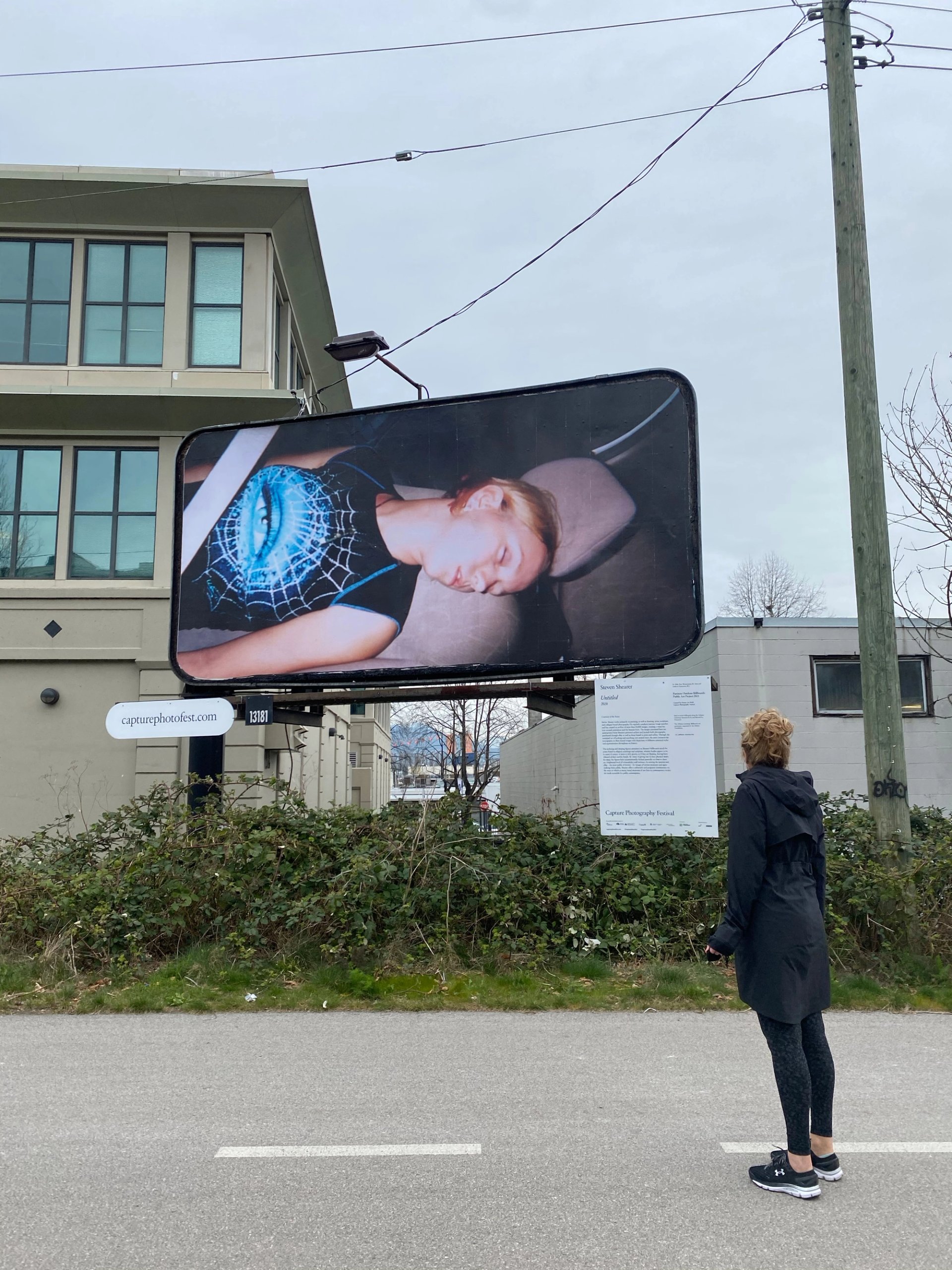
Steven Shearer, Untitled (2020) Photo: courtesy of Kim Spencer-Nairn
According to Capture Photography Festival founder and board chair Kim Spencer-Nairn, Shearer’s works, striking images of people caught sleeping in public that simultaneously evoke Pop art and religious Renaissance figure paintings, were the subject of dozens of outraged emails from area residents. In a phone interview, Spencer-Nairn said that complaints ranged from “it made me want to vomit” to “it reminded me of dead people”.
“Our partner, Pattison Outdoor Advertising have been very supportive of Capture, but as a commercial advertiser weren’t comfortable with the negative attention the work was getting,” Spencer-Nairn said. The “difficult decision” to remove the work was a joint one made by the festival and Pattison, she said, adding: “Clearly we overestimated Vancouver’s appetite for provocative work.” Pattison and the artist both declined to comment at the time of publication.
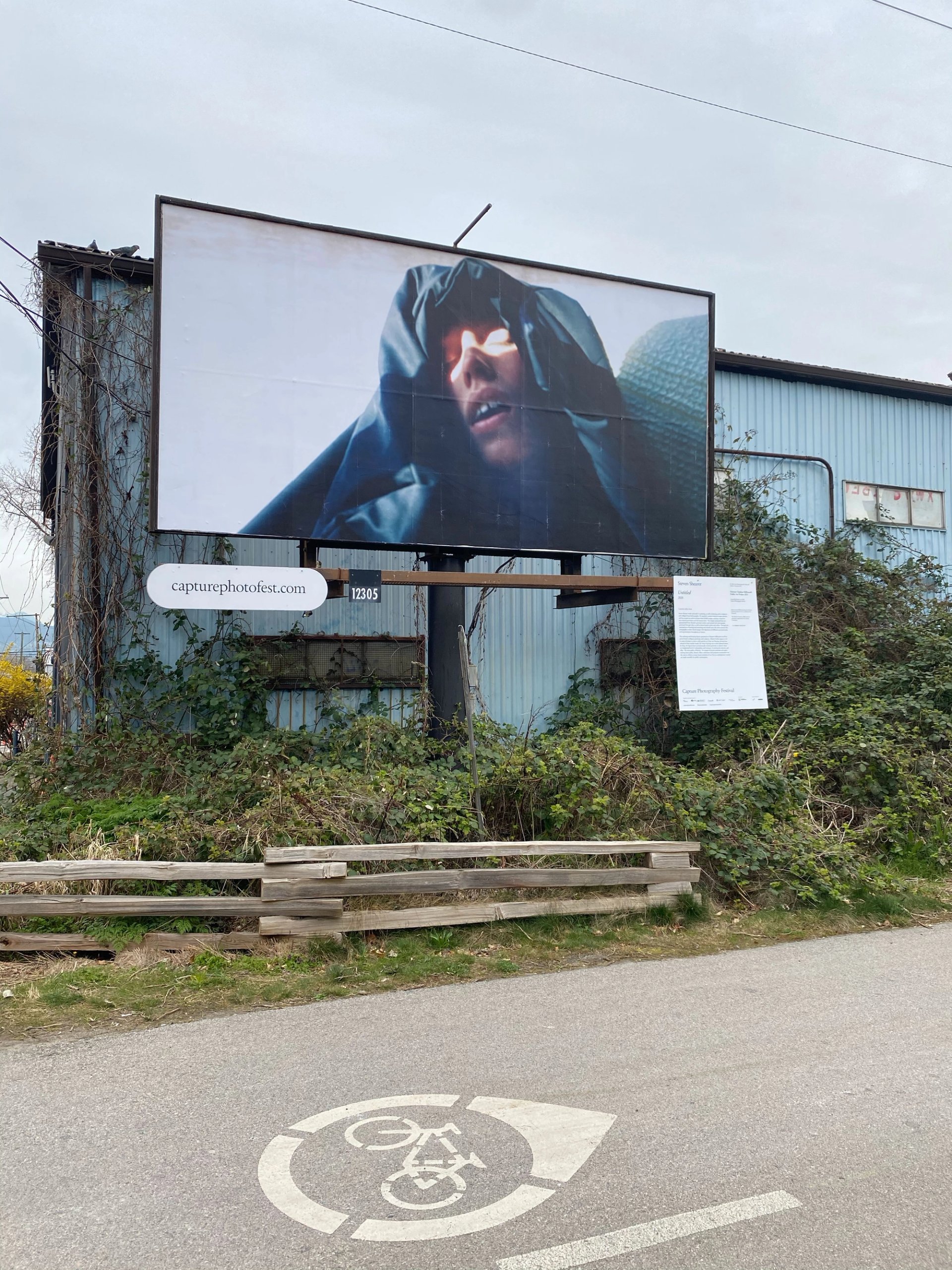
Steven Shearer, Untitled (2020) Photo: courtesy of Kim Spencer-Nairn
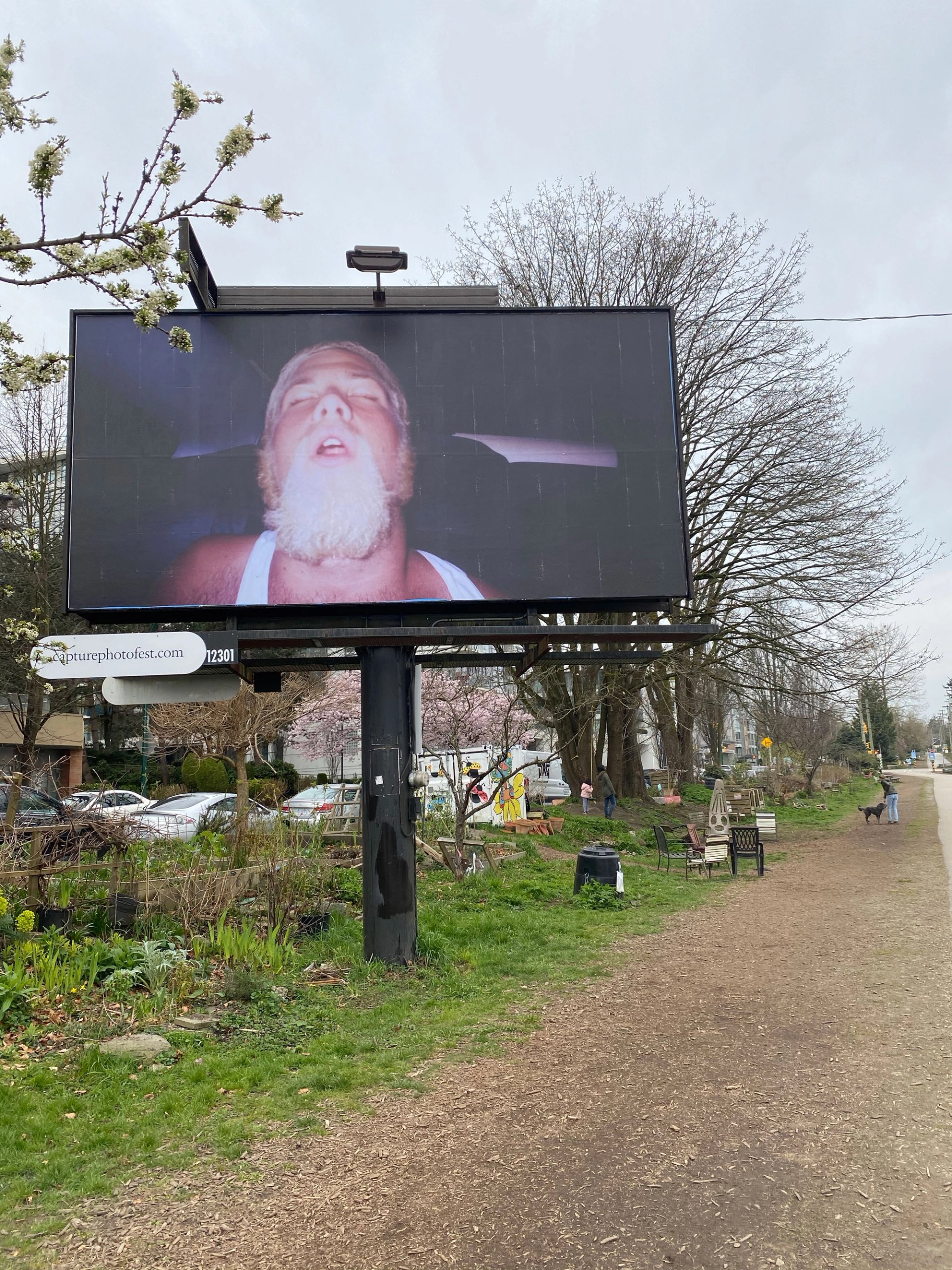
Steven Shearer, Untitled (2020) Photo: courtesy of Kim Spencer-Nairn
This is not the first time that public art in Vancouver has been removed due to residents’ complaints. Eleven years ago, when the Vancouver Biennale presented Dennis Oppenheim’s Device to Root Out Evil—a 25-foot, upside-down, New England-style church with its steeple thrust into the ground—it was driven out of town by “concerned” residents who complained it blocked their view. The Vancouver Parks Board was also inundated with complaints voicing offended Christian sensibilities.
But a proposed new residence in the area for those affected by homelessness and addiction has heightened concerns about property values, in a city with one of the highest costs of housing in North America, and where developers are often funders of public art.
Still, there really does appear to be no such thing as bad publicity and the controversy has actually generated some buzz about the photography festival, which opens 2 April. Other public art works commissioned for the event include the artist Jordan Bennett’s installation inspired by a Mi’kmaq porcupine quill basket at the Dal Grauer Substation in downtown Vancouver, and related exhibitions include an upcoming display of re-contextualised, labour-themed historical photography by Angela Grossman.
While a faint hope remains that a series of equally outraged emails might restore the Shearer works to their rightful place, Spencer-Nairn sees the controversy as “an opportunity to engage a broader audience in a conversation about public art”.

Steven Shearer, Untitled (2020) Photo: courtesy of Kim Spencer-Nairn


